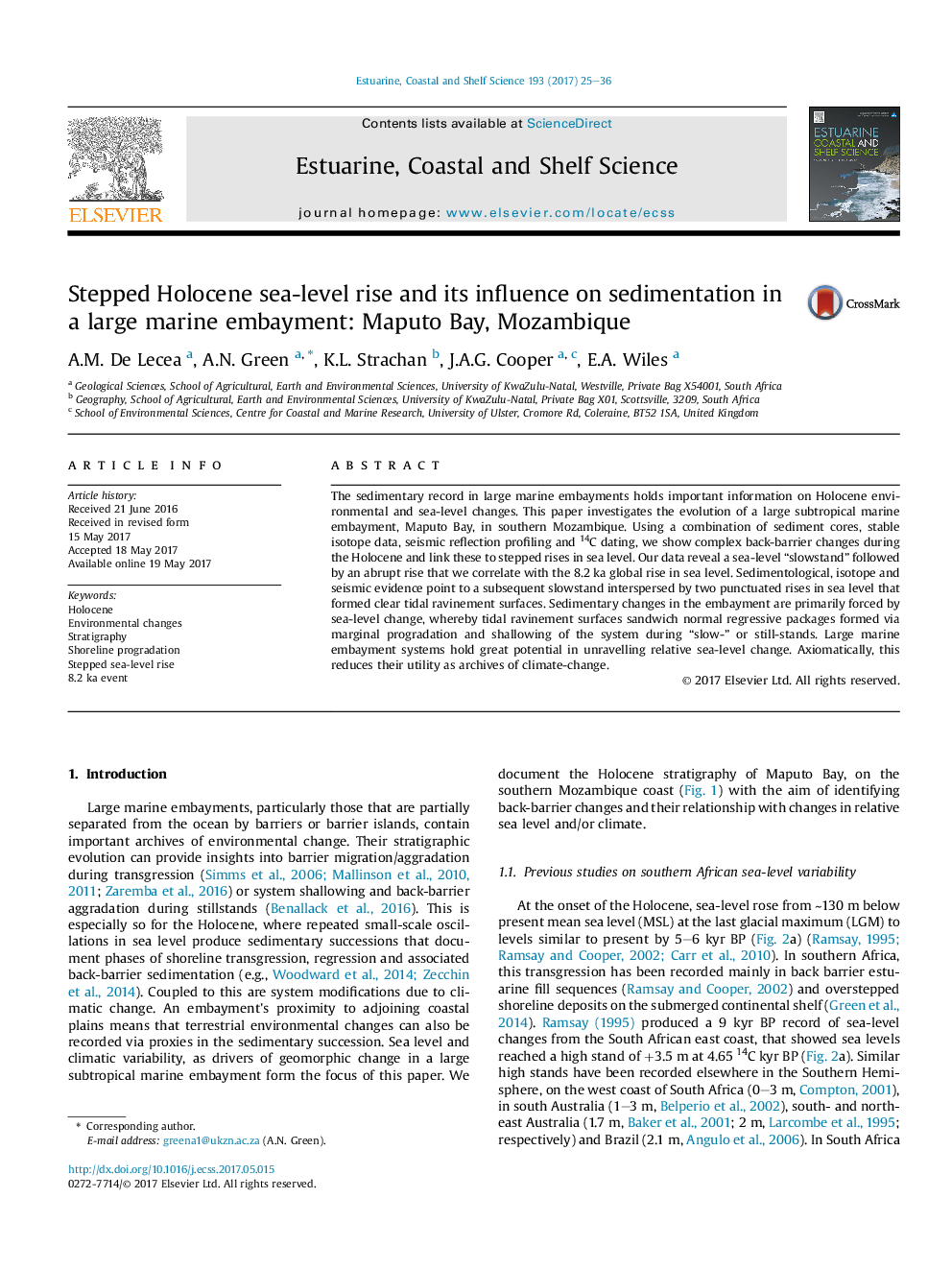| Article ID | Journal | Published Year | Pages | File Type |
|---|---|---|---|---|
| 5765113 | Estuarine, Coastal and Shelf Science | 2017 | 12 Pages |
The sedimentary record in large marine embayments holds important information on Holocene environmental and sea-level changes. This paper investigates the evolution of a large subtropical marine embayment, Maputo Bay, in southern Mozambique. Using a combination of sediment cores, stable isotope data, seismic reflection profiling and 14C dating, we show complex back-barrier changes during the Holocene and link these to stepped rises in sea level. Our data reveal a sea-level “slowstand” followed by an abrupt rise that we correlate with the 8.2 ka global rise in sea level. Sedimentological, isotope and seismic evidence point to a subsequent slowstand interspersed by two punctuated rises in sea level that formed clear tidal ravinement surfaces. Sedimentary changes in the embayment are primarily forced by sea-level change, whereby tidal ravinement surfaces sandwich normal regressive packages formed via marginal progradation and shallowing of the system during “slow-” or still-stands. Large marine embayment systems hold great potential in unravelling relative sea-level change. Axiomatically, this reduces their utility as archives of climate-change.
